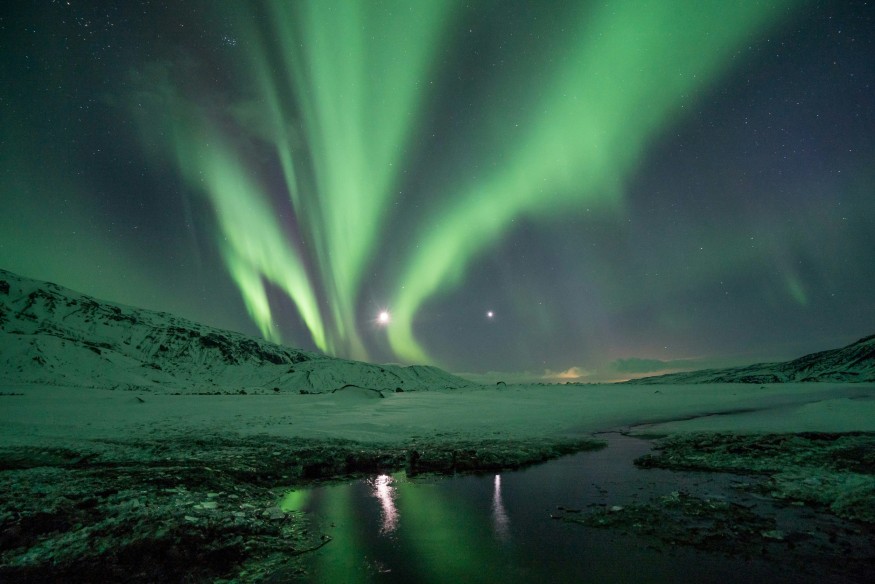Auroras are natural light displays that appear in the upper atmosphere, most famously glowing across the polar regions. These colorful waves of light move across the sky in shifting patterns, creating one of nature's most breathtaking scenes. Seen in the north as the aurora borealis and in the south as the aurora australis, these lights have fascinated humans for centuries. To understand what auroras are, it's essential to explore the science behind this beautiful phenomenon.
At their core, auroras are caused by interactions between the Earth and the sun. By learning the basics of aurora science, anyone can appreciate not only the visual beauty but the physical processes that make the lights possible. Understanding how solar particles, magnetic fields, and atmospheric gases interact helps reveal why auroras occur, why they appear in certain colors, and why they mainly form near the poles.
Understanding the Science of Auroras: Northern Lights Explained
To understand the lights, it helps to look at how the sun and Earth's magnetic field work together. The sun constantly releases a stream of charged particles known as the solar wind. When bursts of these particles reach Earth, they encounter our planet's magnetosphere — a protective magnetic bubble that surrounds the earth.
As these charged particles travel along the magnetic field lines, they move toward the poles. Once they reach the upper atmosphere, they collide with gases such as oxygen and nitrogen. These collisions release energy in the form of glowing light, creating the Aurora. This interaction is the heart of northern lights explained: solar particles energize atmospheric gases, producing ribbons, arcs, and curtains of colorful light.
Auroras concentrate near Earth's magnetic poles because of the shape of Earth's magnetic field. Field lines guide charged particles downward in the polar regions, making these areas the main stages for auroral activity. During periods of intense solar activity—like solar storms—auroras can spread further from the poles and become visible in lower latitudes.
Different Types and Colors of Auroras: Aurora Borealis and Aurora Australis
While the aurora borealis in the Northern Hemisphere is more widely known, its southern counterpart, the aurora australis, is just as impressive. Both types are created through the same scientific processes and appear as shifting waves, spirals, or curtains of light. The main difference lies in location: the aurora borealis is seen in northern regions such as Alaska, Canada, Norway, and Finland, while the aurora australis is visible in Antarctica, southern Australia, and parts of New Zealand.
Auroras display a variety of colors depending on the type of gas involved and the altitude at which the collision occurs.
- Green, the most common color, appears when solar particles interact with oxygen about 100–300 km above Earth.
- Red auroras occur higher in the atmosphere, when oxygen is energized above 300 km.
- Purple and violet hues arise when nitrogen molecules are excited by incoming particles.
These color variations, combined with changes in altitude, shape, and solar intensity, make each auroral event unique. Some displays stretch across the sky as calm arcs, while others burst into fast-moving waves that seem to dance.
Auroras also tend to appear in specific shapes such as bands, rays, and coronas. These shapes depend on how solar particles flow along magnetic field lines. The mix of colors, patterns, and motion makes both the aurora borealis and the aurora australis unforgettable sights.
Conclusion
Understanding what auroras are opens the door to appreciating one of nature's most captivating spectacles. Through the lens of aurora science, the interaction between charged solar particles, atmospheric gases, and Earth's magnetic field becomes a transparent and fascinating process. Whether observing the aurora borealis in the north or the aurora australis in the south, each display is a reminder of the complex forces shaping our planet. As more people seek to understand the northern lights, the appreciation for these natural light shows continues to grow. Auroras are not just beautiful—they're a glowing signal of Earth's deep connection to the sun and space beyond.
Frequently Asked Questions
1. When and where can auroras be seen?
Auroras are most commonly visible near the polar regions, especially above the Arctic and Antarctic Circles. They are best seen during the winter months when skies are darkest. Strong solar storms can push auroras farther south or north, making them visible in unusual locations.
2. Why do auroras have different colors?
Colors depend on the type of atmospheric gas being energized and the altitude at which collisions occur. Oxygen produces green and red, while nitrogen produces blue and purple shades.
3. Are auroras visible from space?
Yes. Astronauts aboard the International Space Station frequently see auroras from above Earth. From space, they appear as glowing rings encircling the poles.
4. Do auroras occur on other planets?
Yes. Jupiter, Saturn, Uranus, and even Mars show auroral activity. These planets also have magnetic fields and atmospheres capable of producing similar light displays.
© 2025 ScienceTimes.com All rights reserved. Do not reproduce without permission. The window to the world of Science Times.













